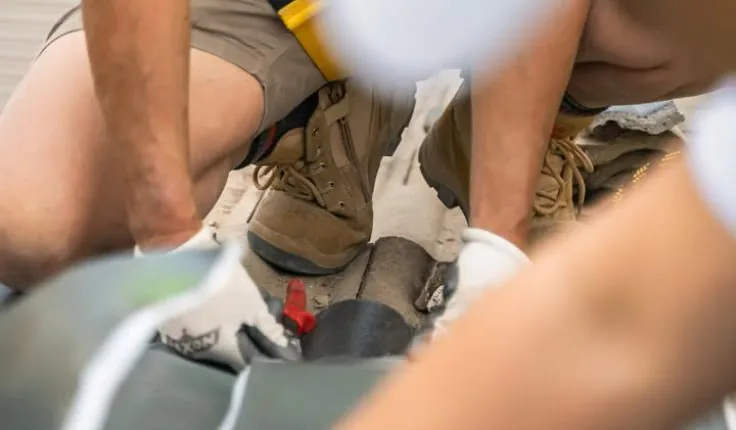Making the Best Choice for Your Roof: Replacement, Restoration, and Quality Workmanship
0 Views

Your home’s roof is one of its most important structural components. It shields your family from the elements, contributes to energy efficiency, and adds to the overall appearance of your property. Over time, even the strongest roofs can suffer from damage, aging, and general wear, leaving homeowners with a key decision—repair, restore, or replace. Understanding when roof replacement is necessary, when restoration will suffice, and how to avoid poor workmanship can help you protect your investment.
Understanding Roof Replacement
Roof replacement is the process of completely removing all existing roofing materials and installing a new system from the ground up. This option is generally recommended when the roof has reached the end of its service life or sustained damage beyond repair.
Some common signs that roof replacement is the right choice include:
-
Multiple recurring leaks despite repairs
-
Significant sagging or bending of the roof structure
-
Large sections of broken or missing tiles or sheets
-
Extensive water or storm damage
-
Widespread rust or corrosion in metal roofing
While roof replacement can be a more expensive undertaking, it provides a fresh start. A brand-new roof can improve weather resistance, reduce maintenance needs, and boost property value. It also allows you to select modern materials that may be more durable, stylish, and energy-efficient.
The Benefits of Roof Restoration
When a roof is still in good condition structurally but showing signs of wear, roof restoration can be a practical and cost-effective alternative to replacement. Restoration focuses on repairing existing issues, improving aesthetics, and adding protective coatings to extend the life of the roof.
This process typically includes replacing broken tiles, repairing flashing, re-bedding and re-pointing ridge caps, cleaning, and applying a new surface coating. Restoration can enhance energy efficiency, refresh the home’s look, and add years of life to your roof without the cost of full replacement.
However, not all restoration services are equal. Homeowners should be cautious of a cheap roof restoration that cuts corners. Low-cost options often involve substandard materials or rushed work, which can result in recurring problems and higher long-term expenses.
Avoiding Dodgy Roof Restoration Work
Choosing the wrong contractor can lead to dodgy roof restoration results, where the roof looks improved at first but quickly develops the same or even worse issues. Poor-quality restoration might involve skipping essential repairs, applying coatings over existing damage, or failing to prepare the surface properly before treatment.
Signs of dodgy roof restoration include peeling paint, uneven coatings, leaks that reappear quickly, and poorly repaired ridge caps. These problems can compromise the roof’s integrity and, in some cases, cause more damage than before.
To avoid this, homeowners should hire experienced professionals, request detailed written quotes, check reviews, and ensure the work comes with a strong warranty.
Cost Considerations
Roof replacement and restoration differ significantly in price, but it’s important to compare the long-term value rather than just the initial cost.
Roof replacement requires more materials and labor, making it more expensive upfront. However, a new roof can last 20–40 years, making it a strong long-term investment.
Restoration is less costly and less disruptive. When done properly, it can add 10–15 years to your roof’s life. However, choosing a cheap roof restoration that sacrifices quality may lead to more frequent repairs or even the need for full replacement much sooner.
Environmental Impact
From an environmental perspective, restoration generally has a smaller footprint because it reuses most of the existing materials. Roof replacement, while sometimes necessary, can produce more waste unless old materials are recycled.
If your roof still has structural integrity, restoration can be an eco-friendly way to improve performance and appearance while reducing waste.
The Process of Roof Replacement
A professional roof replacement follows a detailed sequence to ensure durability and safety:
-
Initial inspection and assessment of existing damage
-
Removal of all old roofing materials
-
Repairing and strengthening the roof structure
-
Installing underlayment and chosen roofing materials
-
Sealing, final quality checks, and site cleanup
When done correctly, this process results in a roof that can withstand decades of exposure to the elements.
The Process of Roof Restoration
High-quality restoration also involves several essential steps:
-
Thorough cleaning to remove debris, moss, and dirt
-
Repair or replacement of damaged tiles or sheets
-
Re-bedding and re-pointing ridge caps as needed
-
Applying a primer and protective sealant
-
Finishing with a durable coating to protect against future wear
This method can revive your roof’s appearance, improve weather resistance, and prolong its lifespan.
Choosing Between Replacement and Restoration
The decision often comes down to the age of the roof, the extent of damage, and your budget. Roof replacement is the better choice for roofs that are severely damaged or nearing the end of their lifespan. Restoration is best for roofs in generally good condition with minor to moderate issues.
Regardless of which option you choose, the quality of workmanship is critical. Avoid dodgy roof restoration practices and be wary of unusually low quotes for what seems like a big job.
Protecting Your Investment
After your roof is replaced or restored, regular maintenance is essential. Clean gutters, remove debris after storms, and schedule inspections every few years. Catching problems early can save you significant costs and extend the life of your roof.
A well-maintained roof not only protects your home but also enhances its curb appeal, which can be beneficial if you plan to sell in the future.
Final Thoughts
Your roof is your home’s first line of defense, and its condition plays a major role in safety, comfort, and property value. Roof replacement is a long-term solution for severely worn or damaged roofs, while restoration can be a smart, affordable choice for roofs that are still structurally sound.
However, the success of either option depends heavily on the quality of the work. A cheap roof restoration might be tempting but can lead to costly issues down the track. Likewise, dodgy roof restoration jobs that skip important steps can do more harm than good.
Investing in experienced professionals who use high-quality materials ensures your roof performs well and looks great for years to come. With the right approach, you can enjoy peace of mind knowing your home is well-protected from the elements.
- TAGS :
Related Posts

Exploring the Power of Digital Tools for Color Selection and Analysis
Isabella / August 16, 2025

















